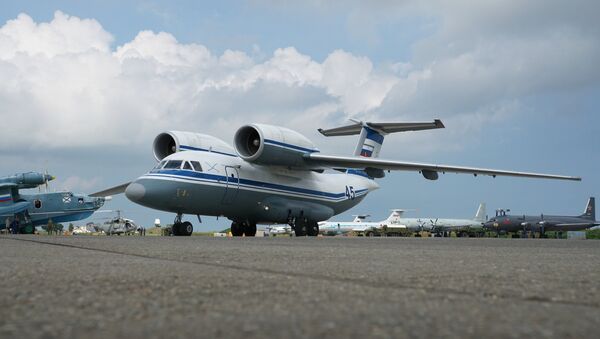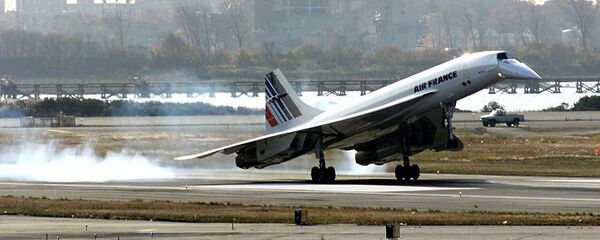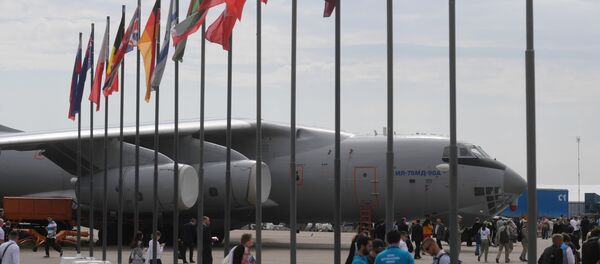On August 31, 1947, the An-2 utility plane, affectionately nicknamed the 'Kukuruznik' (literally 'Corn Crop Duster') made its first flight in the skies over Siberia. Three decades later, on August 31, 1977, the An-72 transport aircraft, affectionately dubbed the 'Cheburashka' for its two large top-mounted engine 'ears', made its own first flight. This year, the An-2, whose agricultural, transport and passenger variants continue to serve around the world, celebrates its 70th anniversary. The An-72, meanwhile, is celebrating its 40th birthday.
Commenting on the occasion, RIA Novosti journalist and defense observer Andrei Kotz wrote that even though the two planes belong to different classes, they have some important things in common. These include their "universality, reliability and tremendous prospects for modernization." The observer noted that "even after many decades, these planes remain relevant both for civilian and military aviation."
According to Kotz, the first test flight was nerve-wracking for Volodin, with the An-2 being his first experimental aircraft.
"The plane made two large circles around the airfield at an altitude of 1,200 meters, and landed after 30 minutes. The prototype of the agricultural aviation complex performed well, proving to have good maneuverability and wind resistance characteristics. State testing began soon after, in December 1947, and on August 23, 1948, the aircraft was accepted into the Air Force." Mass production began in Kiev, with RDB 153 relocating to the city in 1952, where it would be renamed the Antonov Design Bureau.
Over the course of its production run, over 18,000 An-2s would be built across the Soviet Union, Poland and China. The plane was so successful that China continues to produce it under the designation Y-5.
The Kukuruznik has come to enjoy fame in the Guinness Book of Records as the longest-produced aircraft in history. Before the creation of the An-3 in 1980, the An-2 also held the record as the world's largest single-engine airplane.
Over its lifetime, more than 30 modifications of the Kukuruznik would be produced, including crop-dusters, passenger planes, sanitary, aerial photography, reconnaissance, forest fire, seaplane and other variants.
The Russian military continues to use a variant of the An-2, the An-2TD, to this day. The Airborne Troops and DOSAAF (a Russian paramilitary sport organization) use the small, versatile plane for paratrooper training. According to Kotz, "for nearly all first-time jumpers, the An-2TD is the plane they jump from; it has optimal speed and stability characteristics for descent from heights between 800 and 1,000 meters."

Today, it's estimated that over 2,000 Kukuruzniks of various configurations continue to carry out their duties in about 20 countries around the world; about 300 of them are in Russia. Many have over 30 years of continuous operation under their belt.
However, as Kotz pointed out, aircraft engineers aren't in any hurry to write off the granddaddy of Soviet transport aviation just yet. Earlier this summer, at the MAKS-2017 airshow, designers from the Siberian Aviation Research Institute showed off the new TVS-2DTS, a modification of the An-2 built from composite materials, and featuring more powerful, modern engines and improved controls.
TVS-2DTS, Novosibirsk, August 6, 2017. #avgeek pic.twitter.com/q0J0K6Hy5w
— Max Grishin (@GrishinMax) 12 августа 2017 г.
According to the journalist, "by all the main characteristics, the new aircraft will exceed those of the An-2, while retaining its main advantage: low speed on takeoff and short takeoff run. The plane will be able to fly at speeds up to 300 km/h (compared to the An-2's 180 km/h), will have a flight range of 2,000 km (versus the An-2's 1,200 km) and a carrying capacity of 2.5 metric tons (compared to 1.5 tons for the An-2)."
The new plane is expected to become a useful tool for fighting forest fires, and delivering passengers and essential cargo to remote Russian regions in the far north.
An-72: Transport Aviation Innovator
Also marking its birthday on Thursday is the An-72, the Soviet-Ukrainian transport aircraft which first took to the skies 40 years ago to replace the An-26 turboprop civilian and military transport plane.
The journalist noted that this arrangement was anything but accidental, providing the plane with excellent lift capability. "Thanks to this design decision, the An-72 required just 620 meters of runway for takeoff and 420 meters for landing. Additionally, the placement of the engines above the wings helped reduce the risk of damage by foreign objects, allowing the plane to use unpaved airfields."
The An-72 was innovative in a number of other areas as well, using an automated, radar-connected navigation system, a first for Soviet transport aviation.

In total, about 120 An-72s have been produced; over 40 continue to be used by Russia's Aerospace Forces, the Navy, the FSB Border Guard Service and the National Guard.
In the future, the An-72 is expected to be replaced by the Ilyushin Il-112 and Il-214 light and medium transports. The former is expected to make its first flight in 2018, the latter sometime between 2022 and 2025. Until then, the An-72 will continue to serve as a workhorse of Russian military transport aviation.






